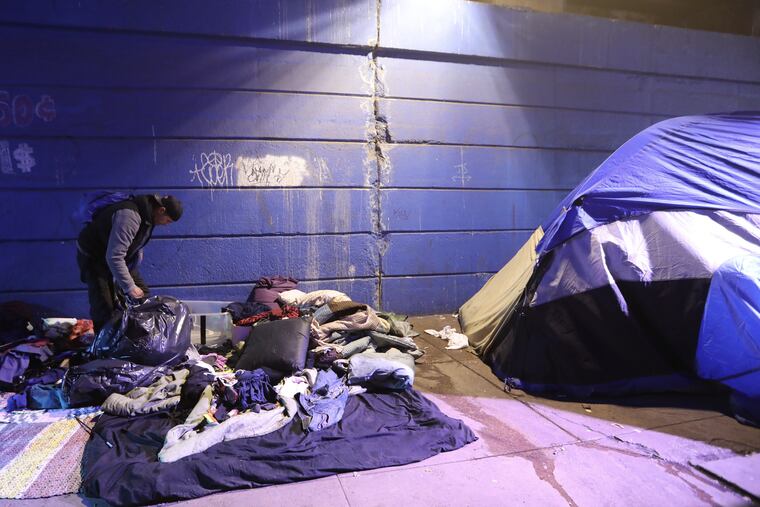In Philadelphia, gun violence, poverty, and opioids are killing residents before their time, report finds
Although key health indicators improved in Philadelphia in 2018, it lags behind other major U.S. cities.

Smoking and consumption of sugary beverages fell to new lows in Philadelphia in 2018, cancer death rates continued to inch downward, and teen health indicators improved.
That’s the good news. But the latest annual Health of the City report also shows heart disease and cancer remain the leading causes of death, with blacks and Hispanics disproportionately affected — a disparity that directly correlates with poverty. Gun violence increased, and the opioid epidemic continued to take a heavy toll.
The city’s Department of Public Health produces the annual report to help officials, health-care providers, and residents better understand factors influencing health. Data come from a variety of sources, including Pennsylvania’s telephone-based population survey of behavioral risk factors.
“Overall, Philadelphia’s health lagged behind other major U.S. cities,” the report concluded. “These differences were largely driven by persisting disparities in key health outcomes and behaviors for racial/ethnic minorities and those experiencing poverty.”
In Philadelphia, 40% of residents are African American, 34% are white, 15% are Hispanic, and 7% are Asian.
On virtually every health measure — obesity, hypertension, diabetes, cancer incidence and mortality, childhood asthma — rates are worse for blacks and Hispanics than whites. Blacks also are more likely to die prematurely, defined as before age 75. Both blacks and Hispanics self-report higher rates of poor health than whites.
Life expectancy, which saw no change from the prior year, is highest for Asians (93.2 years for women and 86.9 for men) and lowest for African Americans (77.8 for women and 68.8 for men). Hispanic women live longer than white women (84.9 compared with 79.9), but Hispanic men and white men are about the same, living a little more than 74 years.
» READ MORE: Pa. childhood obesity rate is 9th highest in nation, and N.J. is 22nd, new study finds
More Philadelphians than ever have health insurance, primarily because city Medicaid enrollment increased to 28% under the federal Affordable Care Act. But insurance and access to care are more sources of disparity. About 7% of white adults are uninsured, compared with 10% of blacks, 11% of Asians, and 19% of Hispanics.
“Poverty is the underlying determinant for many of the racial and ethnic health disparities that persist in Philadelphia,” the report said. “Neighborhoods with high rates of poverty often have lower access to healthy affordable foods, safe outdoor spaces for physical activity, and clinical services, and higher rates of tobacco and alcohol retailers and community violence.”
One unhealthy habit — glugging sugary beverages — fell significantly, especially among teens, reflecting the city’s tax on the drinks. About 29% of adults and 14% of teens reported daily consumption. Cigarette smoking — Philadelphia has one of the highest adult smoking rates among U.S. cities — also declined; the adult rate fell by 4 percentage points to 19%, while the teen rate fell to the all-time low of 2%.
Rates of teen births and binge drinking reached the lowest levels in a decade — but teen vaping dramatically increased.
Opioid addiction trends were mostly discouraging. Despite a slight decrease in fatal drug overdoses in 2018, it remained the third leading cause of death among Philadelphians. The crisis continued to drive up rates of nonfatal overdoses, drug-dependent newborns, and HIV infections.
The homicide rate, which had been declining for several years, rose to about 21 per 100,000 residents. Most of those killings, more than 300, involved guns. And the homicide death rate for blacks was nearly 10 times higher than for whites and double the rate for Hispanics.
“Shootings clustered in neighborhoods with high rates of fatal drug overdoses,” the report said.